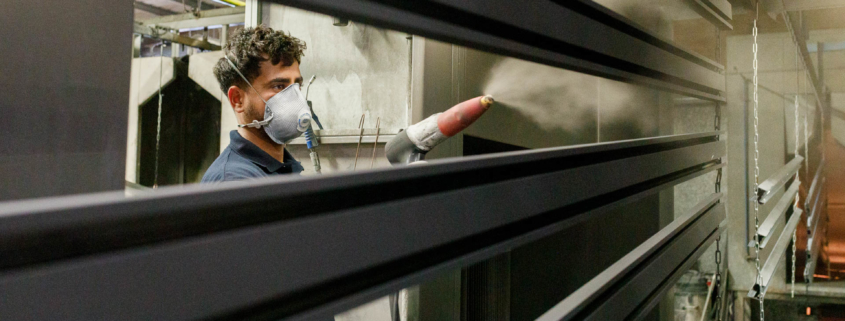What are the Finish Options for Aluminium Extrusion?
What are the Finish Options for Aluminium Extrusion?
Aluminium has natural corrosion resistance, along with good thermal and electrical conductivity. Therefore, certain applications require no surface finishing. However, when exceptional corrosion resistance, minimal wear and aesthetic appearance matter, there is a choice of finish options for aluminium extrusions.
Plan Aluminium Extrusion Finishes From the Start
The word ‘finishes’ naturally leads us to think that this is something we need to consider at the end of the manufacturing process. Once the aluminium has been extruded, fabricated and assembled, we can plan the finishes. However, we encourage you to plan the finish of aluminium extrusions from the start. That’s because it informs the aluminium alloy used and the preparation process.
In our previous article on Design Tips for Aluminium Extrusions, we discussed how starting with the end application informs the most suitable alloy. It can also negate the need for machining later in the process. The same applies to finishes. If we know what you want from the start, we can plan the best way to achieve it.
Types of Finishes for Aluminium Extrusions
There are four main finishes for aluminium extrusions:
- Mill Finish – the metal in its raw state as extruded
- Anodised Finish – enhancing the natural oxidising properties of aluminium
- Powder Coating – adding uniform colour to the surface
- Polished Finish – when appearance matters
Let’s explore each in greater depth.
What is Mill Finish Aluminium?
Mill finish is the term used to describe the untreated surface of the metal as manufactured. Exposure to the air causes natural oxidisation and this creates a protective film over the aluminium extrusion. The natural oxide film gives adequate protection for applications where low cost and no maintenance are required and where a change in surface appearance is acceptable. The metal is durable and resistant to corrosion.
Mill finish aluminium extrusions are perfectly acceptable for many applications, such as glazing bars, greenhouses, window reinforcement bars and transport sections. However, the surface appearance may alter in response to weathering and pollutants in the atmosphere.
What is an Anodised Finish?
Anodising aluminium extrusions is a controlled electrochemical process that produces a thicker oxide film. It essentially builds on the naturally occurring process providing a stronger corrosion-resistant surface. Rather than a surface application, this finish is an integral part of the metal. As such, it doesn’t chip or flake off.
Anodised aluminium extrusions have enhanced corrosion resistance and durability. In addition, heat dissipation is increased, and the appearance is smooth and even. This finish is specified when appearance is important, or in engineering applications where a harder finish is required.
Typical end uses of anodised products are Automotive, Building and construction, Industrial electronics, Office furniture and Partitioning.
Why Powder Coated Aluminium Extrusions?
If you want to add uniform colour to part or all your aluminium parts, powder coating offers a robust, long-lasting finish. We can match to any RAL tone or the necessary identification or coding colour from the British Standard Colour Chart. Powder coating provides consistency across multiple orders and has high UV resistance, so the tone will not fade or discolour over time.
Powder coating is widely requested as the finish of choice for exterior applications, and interior design fittings. Salesmade has decades of experience in professional aluminium powder coating. With a focus on continuous improvement, we have minimised the environmental impact of our in-house process.
Why Polish Aluminium Extrusions?
Some applications demand a high-grade, shiny finish and this is where aluminium extrusions are polished and buffed. A polished finish is typically specified where visual appeal is important. Examples include interior fittings such as lighting and motor vehicle parts. Please note that some alloys will never achieve a high shine, which is why we advise thinking about the finish from the start.
In addition to enhancing the reflective qualities of the metal, the polishing process removes any imperfections, such as scratches, from the surface. As such, it is selected for applications where hygiene is a priority. This includes surfaces in hospitals and commercial kitchens.
Which is the Best Finish Option?
The best finish option depends on the application, desired appearance, and budget. Tell us what you want, and we will advise on the ideal options. Be reassured that all options provide a durable metal that doesn’t rust and offers an excellent strength-to-weight ratio. Equally, none of the finish options impact aluminium being an infinitely recyclable metal.
If you would like further advice, our team are happy to help. Feel free to use our contact form to send drawings, information and questions. Alternatively, call us on 01296 431292.

